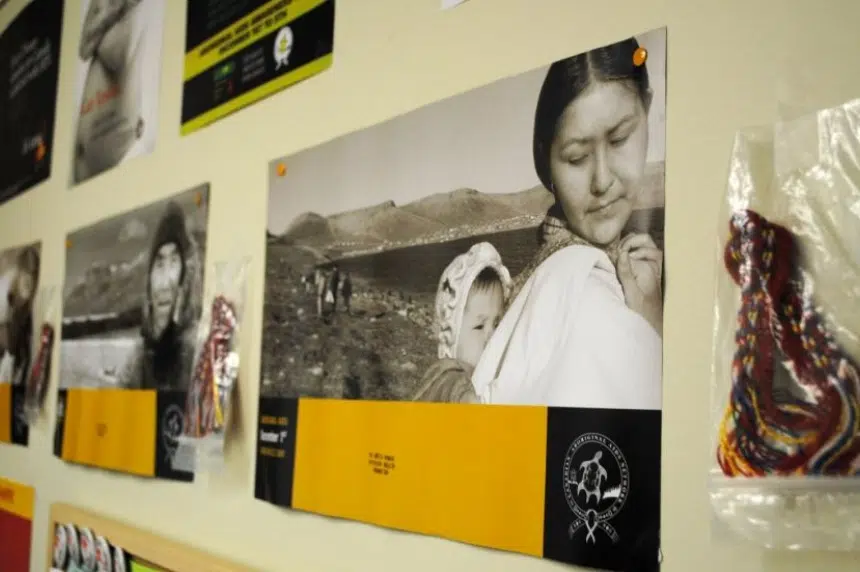Saskatchewan saw two cases of HIV infection in babies in 2015.
“We are all very concerned about these babies being born with HIV and it just gives us more fuel to work harder at what we have set out to do,” provincial deputy chief medical health officer Dr. Denise Werker said.
Along with the two babies that were infected during pregnancy or during labour and delivery, a third case is under investigation. It takes a number of tests, over a number of months to have a case confirmed, Werker said.
While all women are offered HIV testing as part of prenatal care, not all women are captured by the health system early enough, she said.
“In Saskatchewan, 50 per cent of our new HIV infections are related to intravenous drug use and that is more challenging in terms of dealing with. It’s not just a question of identifying the woman with HIV positive-ness, but to provide some support for sometimes a very chaotic life that these women lead.”
The numbers from the 2013-14 year show 25 per cent of new HIV infections were in women of child-bearing age.
Werker said there are likely 40 women who are HIV positive and pregnant ever year, and she expects that number to grow.
“The fact that we had zero cases of transmission last year, is perhaps luck more than anything else. I wouldn’t say that the two cases indicate that things are out of control. It is certainly something of concern and is something we will continue to address.”
Risk of transmission of mother to child decreases enormously if the amount of virus the mom has in her system is very low. Getting treatment for the mother is a good first step. Then there is another medication given intravenously during labour and delivery. Babies born to HIV-positive mothers or with unknown HIV status are given HIV medication for the first six weeks, Werker said.
Without any treatment, the risk of mother-to-child transmission is 25 to 40 per cent, but with treatment it is reduced to two per cent, she said.
“So even when care is excellent and optimum, there’s still a small risk of passing on HIV infection to the baby.”
Saskatoon doctor and co-lead of Saskatchewan HIV/AIDS Research Endeavour (SHARE) Ryan Meili said he is concerned about the medicine access and a lack of HIV strategy. He said HIV continues to be a serious problem in the province.
“We don’t have communication between different levels of government that allows us to tackle this problem on and off reserve” – Dr. Ryan Meili
“Nobody should be born with HIV. Nobody should get HIV either, but being born with it seems particularly unfair, but it’s also a tiny percentage of the larger problem,” he said.
He said that there isn’t enough action towards a new strategy. The previous plan expired in 2014.
“There is pretty steady recognition that we are under resourced and unable to really deal with the problem in a way that is effective. We don’t have the type of data collection that is necessary so that we are really monitoring and evaluating what’s going on with HIV,” Meili said.
“We don’t have communication between different levels of government that allows us to tackle this problem on and off reserve, it’s really a difficult situation.”
According to Werker, the funds for HIV testing, education and care that started under the 2010-2014 HIV strategy continue to be delivered, mostly through base funding to the health region.
SHARE wants the province to adopt the 90-90-90 targets from the United Nations and World Health Organization. This plan has the goal of 90 per cent of all people living with HIV knowing their HIV status, 90 per cent of all people with diagnosed HIV infection receiving sustained antiretroviral therapy, and 90 per cent of all people receiving antiretroviral therapy having viral suppression.
The federal government recently endorsed this plan.
“And that endorsement hasn’t come with any commitment for funding,” Werker said, adding they “are considering endorsing that goal, but the decision has not been made”.
Meili said they have approached the Ministry of Health to try and get a new action plan going forward.
“Case after case of people getting sick and dying of AIDS, which is something you don’t see in the rest of Canada,” he said. “We don’t see people dying of this, we see people with HIV dying of car accidents and heart disease because they are living for 40 years on their pill. Here we are seeing people go from non-infected to intensive care within a couple of years.”







